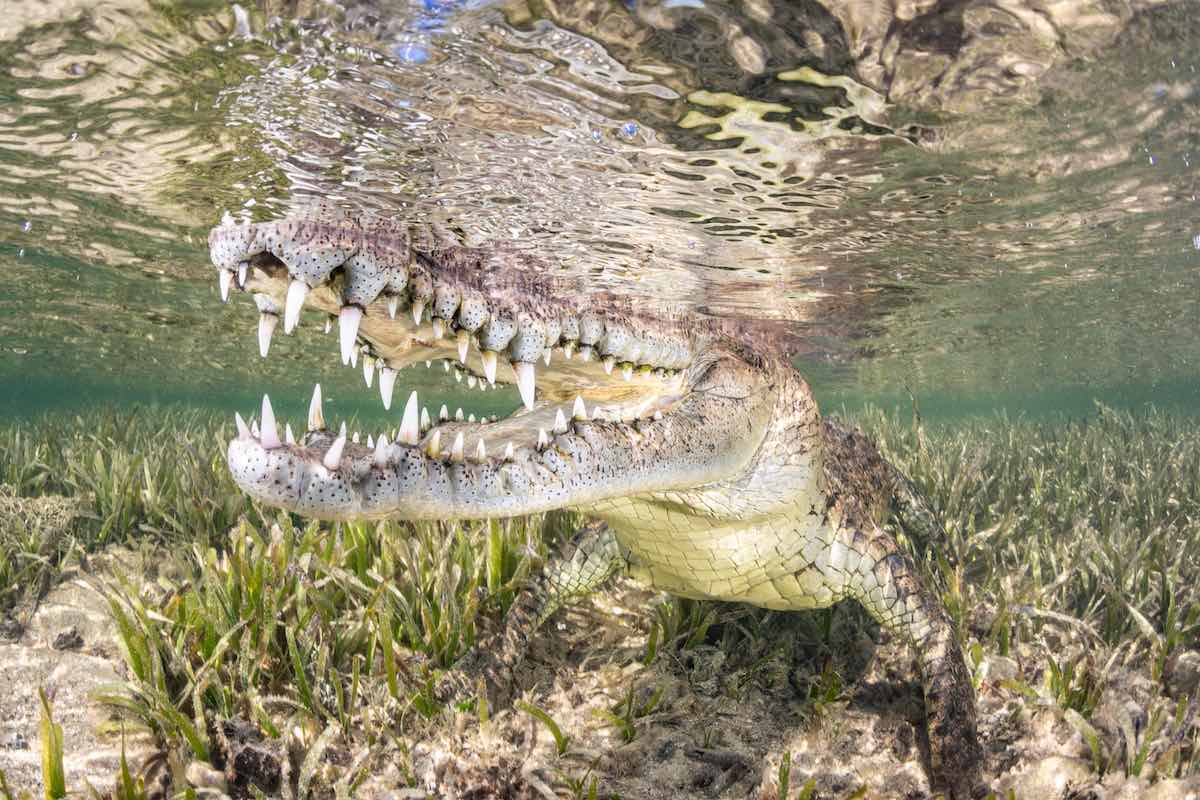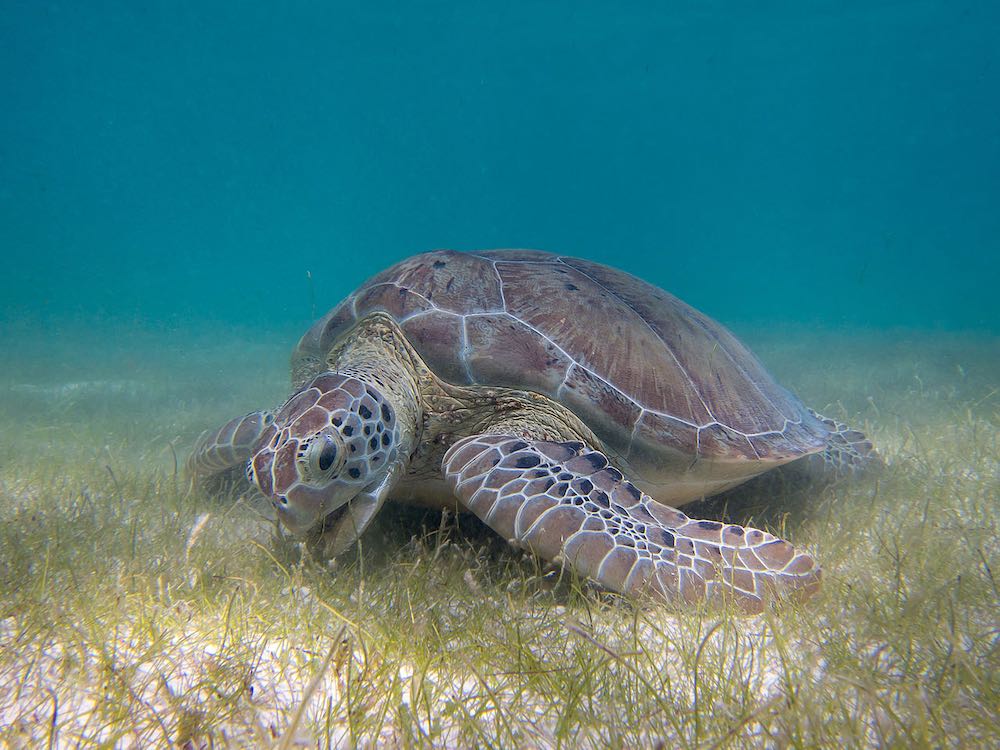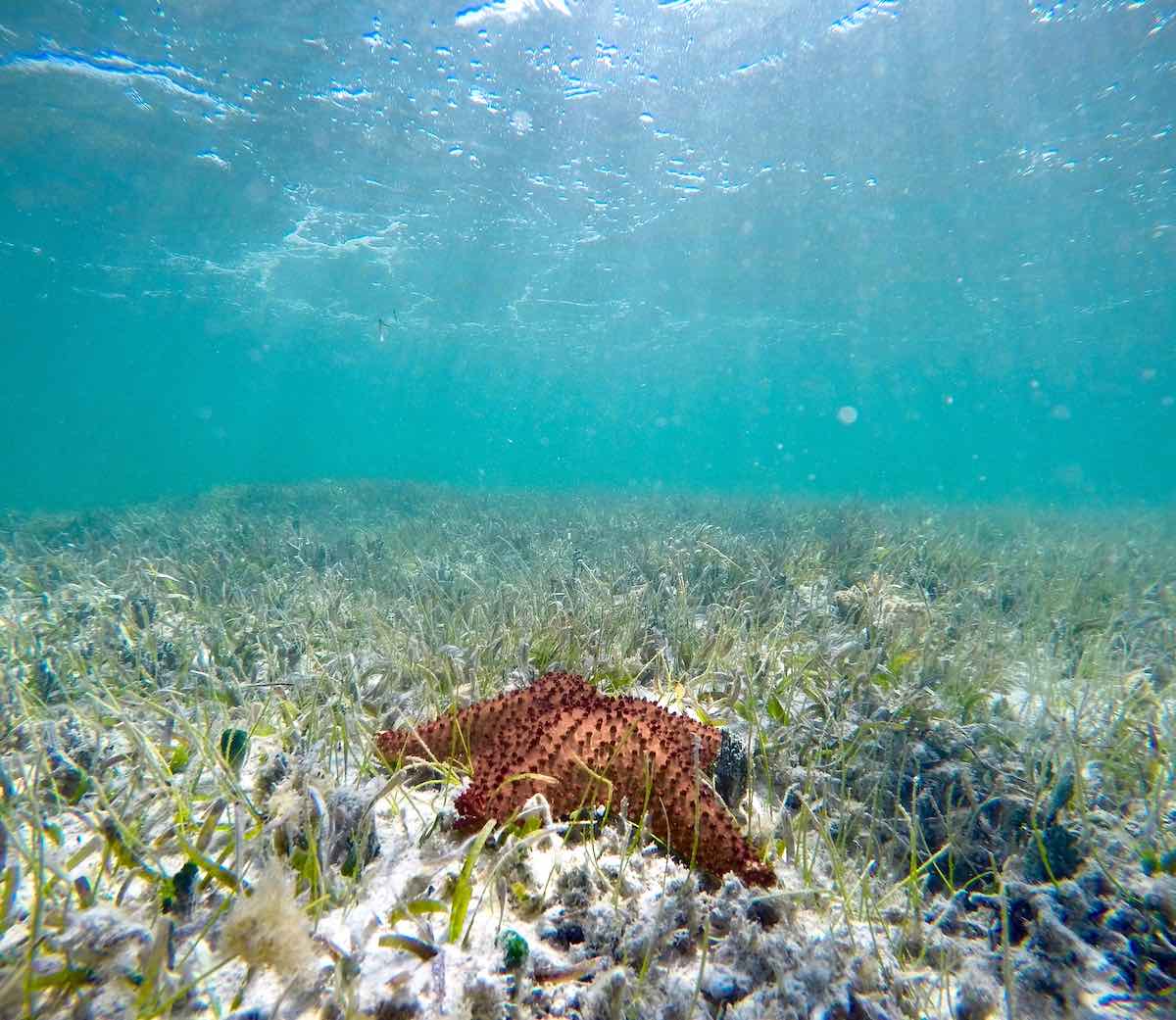Seagrass: The Ocean’s Unsung Hero
Why you should appreciate this underwater plant

Let’s cut to the chase: Seagrass does not get the respect it deserves. Yes, at first glance its greenish-brown leaves may resemble those of your run-of-the-mill land grass, but don’t let looks fool you! Beneath its humble exterior, seagrass is a vital part of the coastal ecosystem. From supplying food to iconic marine species to absorbing large amounts of carbon, seagrasses are a key component of a happy, healthy ocean.
With more than 60 species of seagrass found all over the world, it’s high time we take a moment to celebrate this underrated marine organism. Check out five reasons why seagrass is the ocean’s unsung hero:
Seagrass provides important nursery habitats.
Seagrass meadows, or large beds of seagrass, provide lots of nooks for small fish to hide from predators. It’s a favorite of juvenile fish and invertebrates, including those of recreationally and commercially-important species like red drum, grey snapper and shrimp. These animals will stay sheltered in seagrasses during their juvenile life stages, then move out to the open ocean or reef when they are adults. Losing these protective nurseries could ultimately negatively affect the populations of these species.

Seagrass is a critical food source.
Some of our favorite marine animals prefer seagrass as their meal of choice. Turtle grass (Thalassia testudinum) gets its name because it’s a favorite of the green sea turtle, an endangered species and the only sea turtle that is strictly herbivorous as an adult. Manatee grass (Syringodium filiforme) is a species of seagrass found in the southwest Atlantic, Gulf of Mexico and Caribbean and is a favorite of—you guessed it—manatees. While some animals eat the grass itself, many others eat the tiny invertebrates and fish that hide it its blades.
Seagrass keeps the ocean floor together—literally.
You know how planting trees and shrubs on land can help prevent erosion? Seagrass serves a similar function underwater. It has a complex root system that includes a thick rhizome, which is a thick, horizontally-growing structure that resembles a root, that extends into the sand and anchors the seagrass into place. This helps reduce the risk of sand erosion. Additionally, studies have shown that a mix of seagrass beds, mangroves and reefs help mitigate wave energy that can damage coastlines in a storm.
Seagrass keeps the ocean clean.
Seagrass meadows help filter the water of pollutants and sediments, which increases water clarity and quality. Seagrass also can absorb excess nutrients that enter the ocean from land runoff, helping to protect more fragile and sensitive ecosystems like coral reefs.

Seagrass can store large amounts of carbon.
Just as land plants pull carbon dioxide from the air to perform photosynthesis, seagrasses pull carbon dioxide from the ocean. In fact, seagrass meadows are some of the most efficient ecosystems at carbon sequestration, or pulling and storing carbon dioxide. It’s estimated that it would take anywhere from 10-40 times the amount of land forest to capture the same amount of carbon as a seagrass bed! As carbon emissions continue to increase, it’s critical that we prevent seagrass loss and promote seagrass growth.
Seagrasses are in trouble, and they need our help. It’s estimated that we lose two football fields worth of seagrass every hour. Continued loss of seagrass beds would mean lost habitat for fish and invertebrates, decreased carbon sequestration and lost food sources for endangered species like sea turtles. It would spell bad news for the economy, too—in 2010, seagrass beds contributed almost $14 million to Monroe County, Florida, by providing habitat for yellowtail snapper, shrimp, spiny lobster and more.
Here are Ocean Conservancy, we’re dedicated to helping marine ecosystems like seagrass beds thrive. Check out how we’re protecting Florida, a state with approximately 2.2 million acres of seagrass beds.